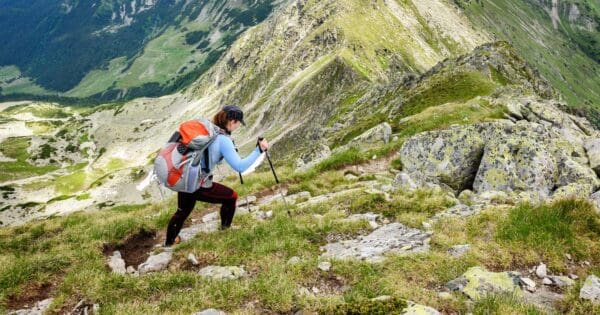A challenging but rewarding experience
Hiking on sand can be challenging, particularly on overnight or multi-day hikes with a full pack. The soft, shifting surface can make it difficult to walk, but the stunning scenery and unique wildlife make it all worthwhile. If you’re planning a hike on sand, here are a few tips to help you stay safe and make the most of your experience.
Choose the right time of day. Hiking on sand during the hottest part of the day can be exhausting and dangerous. Instead, plan your hike for early morning or late afternoon when the temperatures are cooler and the sand is more compact.
Wear the right footwear. Hiking boots or sandals with good traction are essential for hiking on sand. Avoid wearing sandals or flip-flops, as they can easily slip off your feet.
Keep your feet moving. When walking on sand, it’s important to keep your feet moving to avoid sinking in. Take short, quick steps and keep a steady pace.
Follow the waterline. The sand is typically more compacted and easier to walk on just above the waterline. Additionally, any footprints you leave will be quickly washed away by the waves, helping to protect the environment.
Be careful when hiking up and down sand dunes. The sand on sand dunes is often loose and unstable, making it easy to slip and fall. Be sure to take your time and place each step carefully.
Stay hydrated. Hiking on sand can be more tiring than hiking on solid ground, so it’s important to stay hydrated. Bring plenty of water with you and drink it regularly.
Tips for hiking on sand dunes
- Hike along the ridge line of the dunes whenever possible. This is the most stable ground and will be easier to walk on.
- Avoid hiking down into the dips of the dunes, as this can be more difficult and dangerous.
- If you need to hike down a dune, do so carefully and slowly. Place each step carefully and avoid sliding.
- Be aware of the wind direction. If the wind is blowing sand, try to hike on the upwind side of the dunes.
Risks of hiking on sand
- Sinking into the sand: This can be a problem, especially in soft, dry sand. If you sink in too deep, it can be difficult to get out.
- Slipping and falling: The sand on sand dunes is often loose and unstable, making it easy to slip and fall.
- Getting lost: Sand dunes can look similar, so it’s important to stay on track and be aware of your surroundings.
- Getting burned by the sun: The sand reflects the sun’s rays, so it’s important to wear sunscreen and protective clothing.
By following the tips above, you can minimize the risks of hiking on sand and have a safe and enjoyable experience.
Here’s some additional tips for hiking on sand
- Use hiking poles: Hiking poles can provide stability and balance on uneven surfaces, including sand. They also help to distribute your weight and reduce the strain on your legs and joints.
- Take breaks often to rest.
- Follow any designated trails: If there are designated trails, stay on them to prevent damage to the environment and protect any fragile ecosystems.
- Be aware of your surroundings and watch out for hazards such as rip currents, quicksand, and jellyfish.
- Remember to respect the natural environment and follow Leave No Trace principles by packing out all your trash and avoiding any damage to the landscape.
Hiking on sand can be a challenging but rewarding experience. By following these tips, you can stay safe and make the most of your hike.






What’s your go-to gear for hiking on sand, and have you ever had a memorable experience tackling the dunes?
Trail Hiking Australia Did the Great Ocean Walk awhile back and there was a long section at low tide that was all beach. With a full-pack and water for 3 days, all I remember was that it hurt. A lot. 😅
Murky Murk I feel your pain.
Also be mindful of beach nesting birds 🐦 ☺️
Carol Challis totally.
And for those walks shared with 4x4s weirdly their tracks are your friends.
The most indispensable part for me was the dirty girl gaiters to keep the sand out. Other hikers, stopping half a dozen times a day to empty sand out of boots and socks, looked on enviously …
Julie Fidler that’s an excellent tip. I’ll have to try that next time. I usually just give up and walk barefoot on the sand.